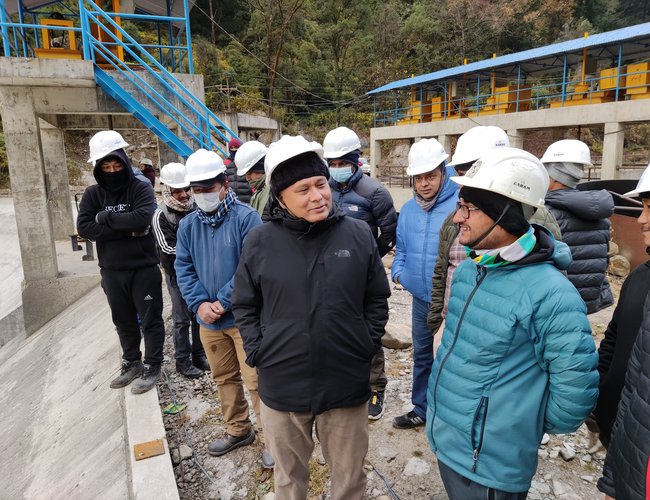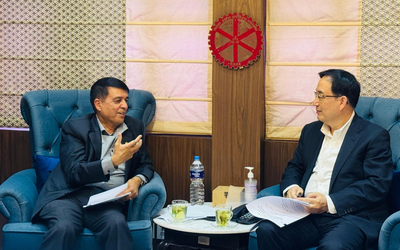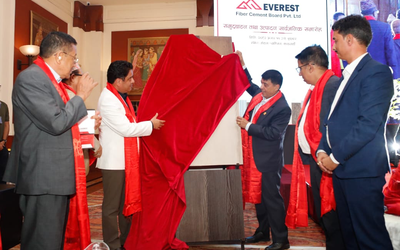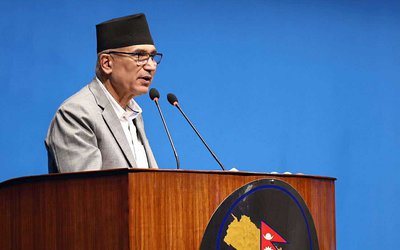
Managing Director of Nepal Electricity Authority Kul Man Ghisng said that the peak demand for electricity has increased by 26.5 per cent this year compared to the demand on the same date last year.
With the implementation of effective policy, practical action plans other incentives to the consumers, the demand for electricity has gone up in the domestic market,
Managing Director Ghisng said that electricity demand capacity both in terms of megawatts and energy units has increased in the recent day. He added that the peak demand in the system on December 13 was 1,539 megawatts whereas the peak demand on the same day last year was 1,217 megawatts – an increase of 322 megawatts.
According to NEA projections, the demand is increasing by 20 per cent every year on average.
In order to meet the peak demand for electricity on December 13, NEA had managed 540 megawatts of electricity from its powerhouses, 529 megawatts from the powerhouses of its subsidiary companies, and 425 megawatts from the private sector powerhouses, and imported 25 megawatts from India. Four megawatts of electricity were exported to India even during peak time on that date.
Likewise, electricity demand has also increased suddenly in the Kathmandu Valley and surrounding regions where there is high electricity consumption.
The highest demand in Kathmandu Valley has increased by around 90 megawatts. The peak demand in the Valley last year was 293 megawatts and it has gone up and reached 382 megawatts. This shows that the demand for electricity has risen notably in the Kathmandu Valley as well. The use of electric cooking tops has increased in the Valley.
On the basis of the energy demand, the electricity consumption was 27.2 million units on December 13, which is 28.65 per cent more compared to the 21.1 million units on the same day last year.
MD Ghising also said that the internal demand for electricity has suddenly increased due to the steps taken to increase the electricity demand and the increase in the cold.
The peak demand for electricity this year has increased compared to the previous year and it is in the range of 300 megawatts. “NEA has adopted the policy of promoting the use of electric appliances and providing to the industries the quantity of power required by them with the aim of increasing the domestic consumption following the surplus of electricity,” said Ghising.
NEA said that the use of electric home appliances as induction cooking tops, air condition, etc. has increased. Similarly, although the process of construction of charging stations has not moved forward at the government level, such stations are being constructed through private sector initiatives.
This has also helped in the growth of electric vehicles. The big industries have been supplied with electricity as per their demand and this has helped enhance their production capacity.
In recent months, NEA MD Ghising has been taking initiative to increase the domestic supply so that NEA does not have waste the surplus energy in monsoon season.
In its drive of expansion, NEA has provided 30 megawatts of electricity to Hongshi Cement Industry, the largest cement factory in the country, since the second week of November. Another cement factory with Chinese investment, Huashin Cement Industry, has also taken 20 megawatts of electricity.
- The Situation Pushes Women Journalists To Speak Louder, Experts Emphasize
- Jun 30, 2025
- SPI NEPAL: Prosperity Through Clean Energy
- Jun 30, 2025
- PM Oli Meets Spanish Prime Minister
- Jun 30, 2025
- FM Dr. Rana Said Nepal recognises constitutional guarantees to citizens' right to food
- Jun 30, 2025
- Weather Forecast: Generally Cloudy With Heavy Rainfall Is Likely In One Or Two Places Of Kathamandu, Biratnagar And Pokhara
- Jun 30, 2025















